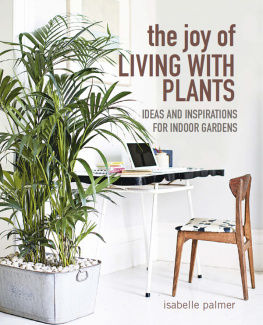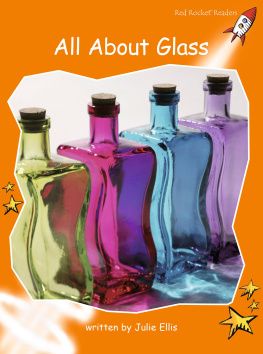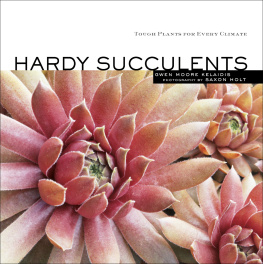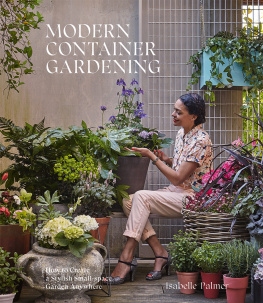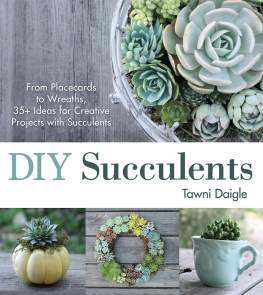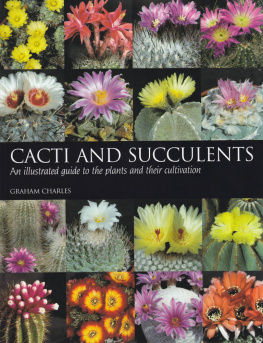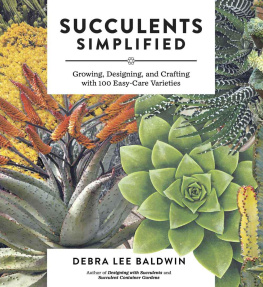succulents
AND ALL THINGS
under glass


succulents
AND ALL THINGS
under glass
ideas and inspiration for indoor gardens
isabelle palmer


To my Grandmother, my guiding light
This edition published in 2020 by CICO Books
An imprint of Ryland Peters & Small Ltd
2021 Jockeys Fields | 341 E 116th St |
London WC1R 4BW | New York, NY 10029 |
www.rylandpeters.com
First published in 2014 as The House Gardener
10 9 8 7 6 5 4 3 2 1
Text Isabelle Palmer 2014, 2020
Design and photography CICO Books 2014, 2020
The authors moral rights have been asserted. All rights reserved. No part of this publication may be reproduced, stored in a retrieval system, or transmitted in any form or by any means, electronic, mechanical, photocopying, or otherwise, without the prior permission of the publisher.
A CIP catalog record for this book is available from the Library of Congress and the British Library.
ISBN: 978 1 78249 921 3
E-ISBN: 978 1 80065 002 2
Printed in China
Copy editor: Caroline West
Photography: Helen Cathcart
Stylist: Marisa Daly
In-house editor: Martha Gavin
Designer: Emily Breen
Art director: Sally Powell
Production: David Hearn
Publishing manager: Penny Craig
Publisher: Cindy Richards

CONTENTS
INTRODUCTION
Living in the city, I am very aware that outdoor space is at a premium. However, with succulents, cacti, and other indoor plants becoming increasingly popular, it is now easier than ever to bring some greenery inside your home. Cacti and succulents thrive in indoor settings, and can look beautiful displayed in unusual terrariums and alternative glass containers. Not only that, but they are super low maintenance, and can become a real focal point of the room!
Even if you live in the country, indoor plants can offer some much-needed contact with nature, something that is so important, not only in terms of esthetics, but also to promote a healthy emotional environment. Houseplants bring their natural form, color, and fragrance to the home, and can add the finishing touch to many interior schemes.
Historically, plants have been used indoors for centuriesindeed, medieval paintings depict Crusaders returning with plant specimens from many corners of the world. The Victorian period in the nineteenth century was a golden age of plant collecting, which went hand in hand with the Victorians passion for exploration and discovery. The Victorian plant hunters were seen as adventurers traveling to remote areas to bring back exotic plants from around the world. This era also saw a rise in popularity of terrariums and Wardian cases. The legacy of these Victorian plant explorers lives on in the plants that thrive in our modern natural landscape.
In this book, I will show you how to choose, grow, and decorate with houseplants, as well as guide you through the different techniques needed to care for your new green guests.
There is nothing more pleasing than bringing greenery into your home. Not only are plants beautiful but many can clean household air and balance humidity.


SUCCULENTS, CACTI, AND PERENNIALS
One of the many joys of growing and displaying houseplants is being able to create your own living landscape or miniature garden. Glass vessels are exceptional in allowing you to watch, as well as house, your new living worlds. In this chapter, I have used various glass objects to encase and display an array of succulents, cacti, and other miniature houseplants, showing them off to their full glory. From angular terrariums and large glass vases to copper lanterns and wine glasses, let your imagination run riot when thinking of ways to display plant-based creations.
ENCLOSED IN GLASS
The word succulent is a descriptive term given to those plants that store water in their leaves or stems. Cacti belong to a large family of plants that are all succulents. There are also other types of succulent besides cacti. So, as a rule, remember that all cacti are succulents, but not all succulents are cacti.
The word cactus is derived, through Latin, from the Ancient Greek (kaktos), a name that was originally used to describe a spiny plant whose identity is now uncertain.
Succulents are found in many countries all over the world and have been a feature of the horticultural field for hundreds of years. They have always held an attraction for gardeners because of their curious and exotic appearance.
During the 15th century, the famous Portuguese explorers Bartholomeu Dias (14511500) and Vasco da Gama (14601524) collected succulents such as Aloe, Haworthia, Stapelia, and many others from Africa. They also discovered Caralluma and Euphorbia (spurge) in India during exploratory trips to find new trade routes to that country.
The Dutch East India Company (which was established in 1602) was also responsible for collecting many succulent species for the Dutch government. Many of these succulents also found their way to the world-famous Royal Botanical Gardens at Kew, in London.


DESERT HEARTH
If youre lucky enough to have an original fireplace, but dont have time to light a regular fire, then this handsome selection of cacti is for you. Of course, you dont need a fireplace to enjoy this display since an empty corner, or perhaps an unnoticed spot by the stairs, would work equally well. This display sits in a selection of beautiful copper lanterns. Rather helpfully, the cacti and succulents are all easy to care for and very low maintenance: they live well regardless of being in the shade and receiving just a little watermaking them perfect plants for the novice or occasionally lazy gardener! (For further advice on caring for cacti and succulents, see .)

The striking Echinocactus grusonii (golden barrel cactus) in the smaller black lantern is armed with stout, golden-yellow spines arranged carefully in rows on ribbed stems; it is quite the attention-seeker. You may find that its sometimes known as the golden ball or, rather cheekily, as mother-in-laws cushion. I think it is one of the most distinctive of all cacti, and it is often used in architectural gardening due to its spherical shape.


